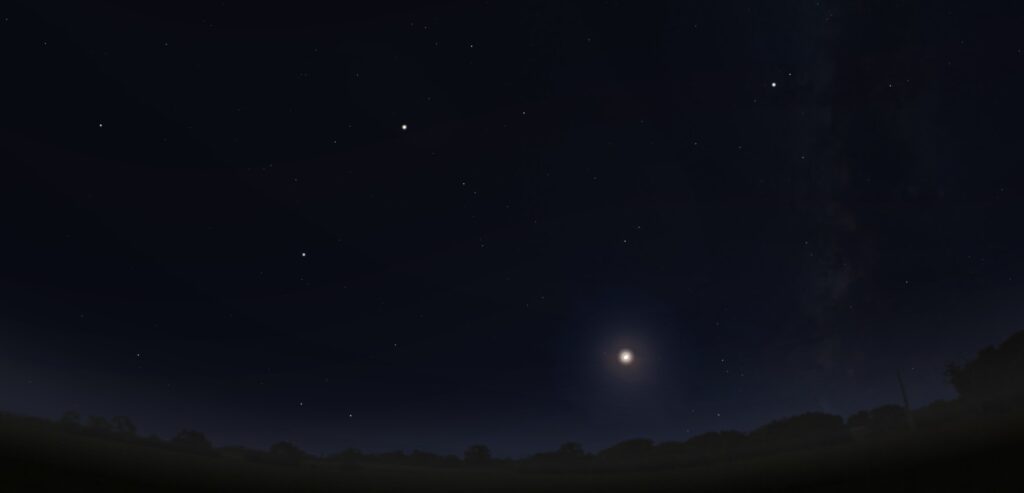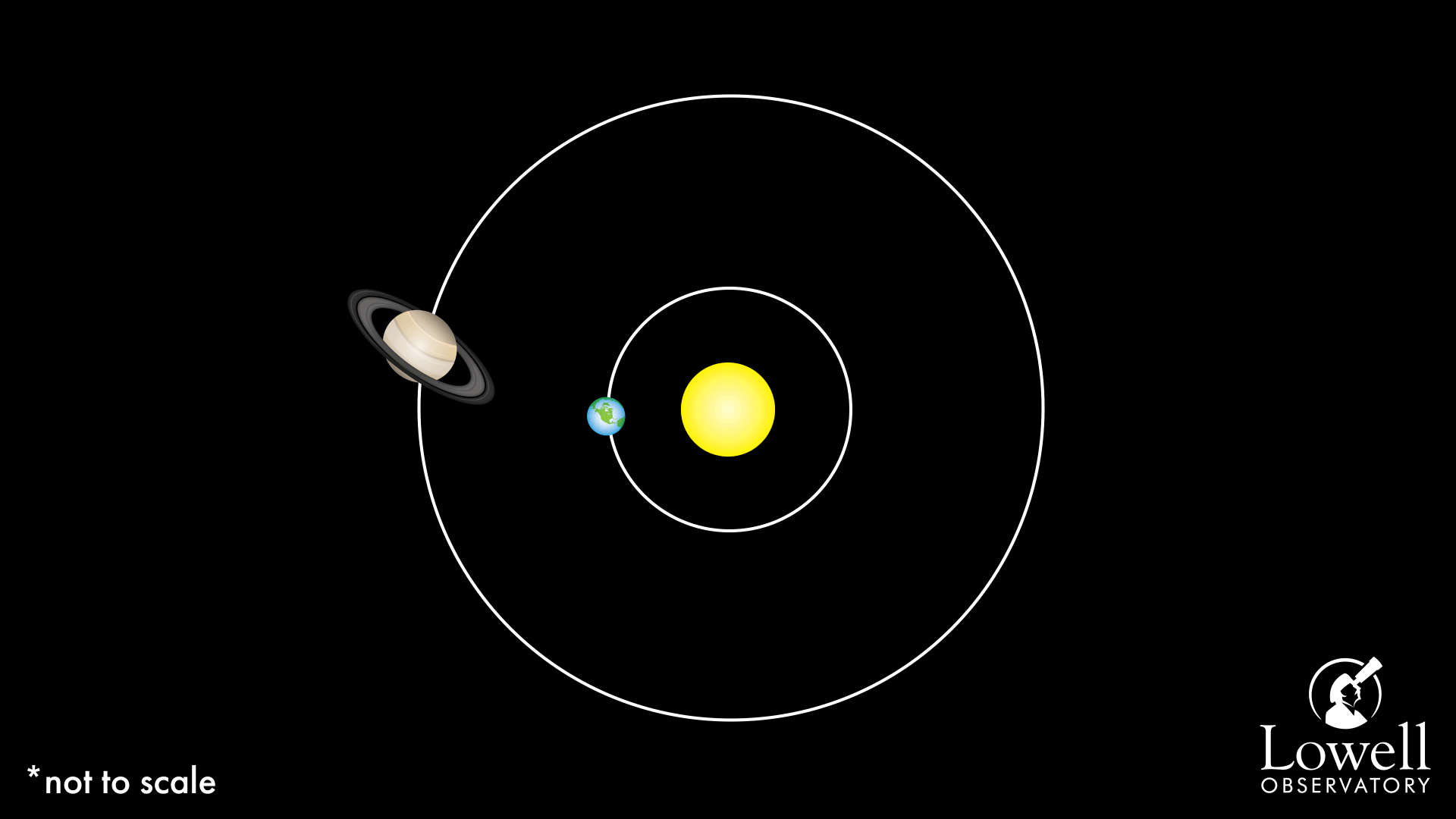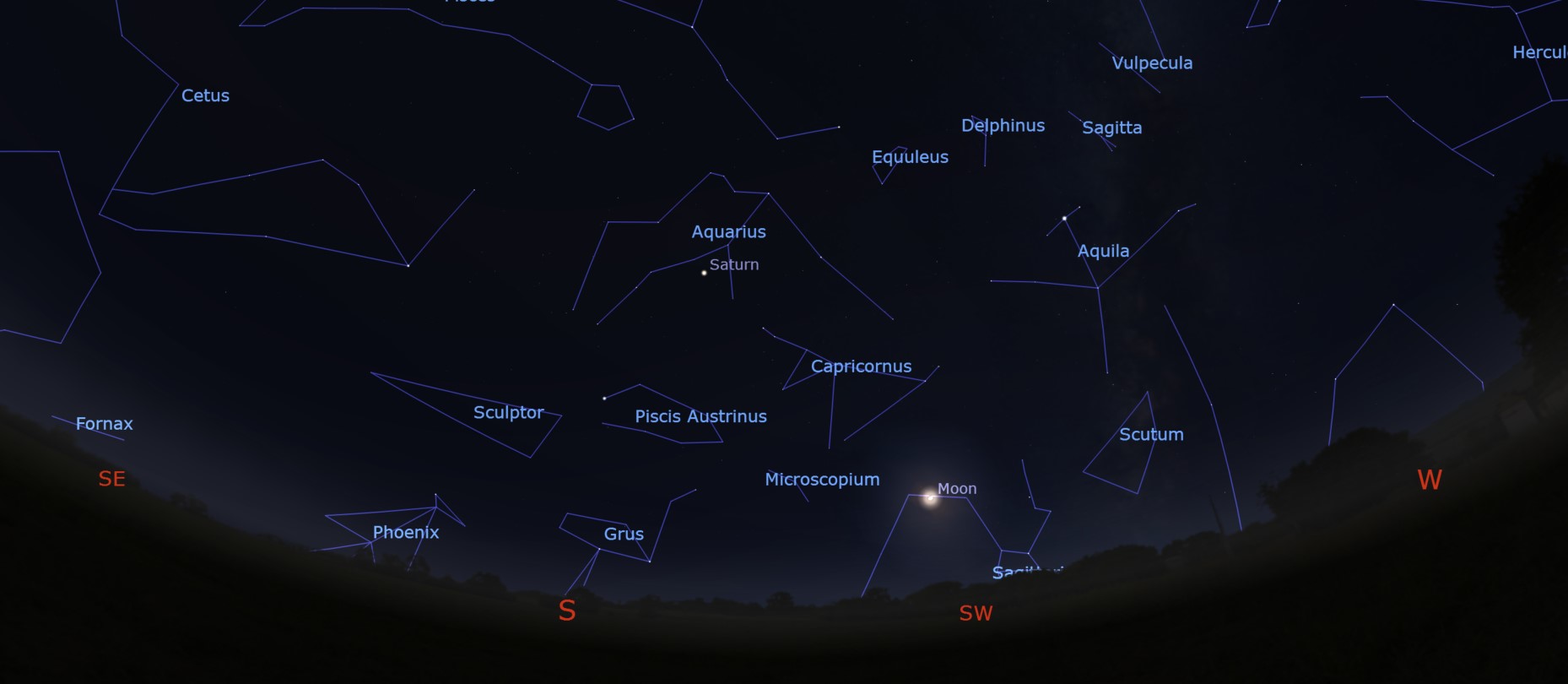
Created Using Stellarium
Saturn to Be at Its Biggest and Brightest in August
On the evening of August 26th and into the early morning hours of the 27th, Earth will pass between Saturn and the Sun. Don’t miss your chance to see the Ringed Planet at its biggest and brightest!
What is the Saturn Opposition?
In astronomy terms, opposition refers to the middle point of the best time of year to view a particular planet. In opposition, the Earth lies between Saturn and the Sun, and so they appear opposite each other in our sky. On the day of opposition, Saturn rises when the Sun sets. It is also the time when the Earth is closest to Saturn in our orbit, making Saturn appear somewhat bigger and brighter in the sky than usual. This close proximity to Earth is called perigee.

How Can I View Saturn at its Biggest and Brightest?
You don’t have to wait until the opposition to admire Saturn — it’s visible in the night sky right now! After sunset, it rises in the eastern sky, appearing as a bright, yellowish “star” in the constellation Aquarius. You will need a telescope or binoculars to see the planet’s rings. Saturn will remain visible in the night sky for the rest of the year, and it will finally fade from view in the sunset’s glare by mid-February of 2024.
If you’d like to see the Ringed Planet at its biggest and brightest, the moment of opposition will be at 08:10 UT or 1:10 am MSTon August 27, 2023, which will be 1:10 AM Flagstaff time (convert to your timezone here). At that instant, the center of Saturn will be 814,572,984 miles from the center of the Earth and 814,570,317 miles from Flagstaff. Both distances are 8.763 AU, or 8.763 times the average distance of the Earth from the Sun.
Saturn will remain visible in the evening sky for the rest of the year, and it will finally fade from view in the sunset’s glare by mid-February of 2024.
We also invite you to visit us here at Lowell Observatory, where we offer a suite of both historic and cutting-edge telescopes for public viewing! See the Ringed Planet in all its glory in the pristine dark skies above Mars Hill.* To book general admission tickets, visit https://lowell.edu/visit/experiences/general-admission/.
*Weather permitting.

Saturn’s position in the sky at the exact moment of opposition on 8/27 | Created using Stellarium